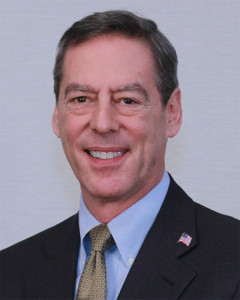The future of green development in NYC: Cannot be limited to luxury developments and class A buildings - by Steven Schleider
Certainly green development is on the rise, gaining significant ground in New York City, especially in the last five years, but to lay the foundation for a city whose future will be considerably more sustainable, green cannot be limited to luxury residential developments, nor class A office buildings.
The future of green development in New York City must also embrace, encourage and fund sustainable new construction and retrofits in lower income areas of New York. With Brooklyn now the center of the hip universe; Queens maintaining its many quality residential neighborhoods as developers eye the borough as the next big thing; and Staten Island remains separated by geography from the other boroughs, the Bronx may well become the proving ground for determining whether sustainability can flourish in lower income areas with a large volume of older buildings.
Bronx borough president Ruben Diaz Jr. is currently overseeing the Bronx program. Begun in early 2015 the program is funded with $2.5 million with the goal of retrofitting apartment buildings with 50 or more units. Eventually smaller buildings will be included. These retrofits will bring direct energy savings to those most in need, help avert future rent increases, improve conditions in affordable properties and increase economic activity from increased spending opportunity.
Among the sustainable building projects currently being overseen by the New York City Department of City Planning (DCP) is the Bronx Metro-North Corridor which will connect residents to job centers in the region and maximize access to existing and proposed commuter rail station in the Bronx. The renovation will improve station visibility and pedestrian access around Bronx Metro-North stations.
A bright spot for green is Sustainable South Bronx (SSBx), an educational program focused on the construction and building industry that addresses economic and environmental issues in the South Bronx – and New York City – through green job training, community greening programs and social enterprise. In addition to the curriculum, SSBx is working with local high school students on air quality in Hunts Point.
A larger plan announced by mayor Bill de Blasio is for an 80% reduction in emissions by 2050, with 3,000 buildings to be retrofitted in the next ten years by 2025. The Bronx program aims to cut the high greenhouse gas emission percentage of multifamily residential buildings, which account for about 35% of all greenhouse gas emissions. In the Bronx, a large percentage of multifamily residential buildings were built before 1980, which account for 70% of building greenhouse gas emissions. The program is a major opportunity to capture energy savings through the implementation of retrofits.
Although much progress has been made in the sustainable building world, there remains a lot of work yet to be done. The Sustainability Accounting Standards Board (SASB) has been asked, by the Real Estate Roundtable to tighten up the leniency of their standards in the real estate sector. In the last decade, sustainability has been at the forefront of considerations when it comes to development and renovation, economic feasibility for lower income residents, and protecting the environment in the real estate industry.
New York City is also reducing greenhouse gas emissions through the NYC Carbon challenge, a goal that forces contributors to commit to reducing emissions by 30% or more in just 10 years. In the last year, 17 universities, 11 hospital organizations (41 individual hospitals), 12 global companies, and 15 residential property management companies joined the challenge from the mayor’s Office of Sustainability.
The year 2015 was recorded as the hottest one on earth. Summer wildfires raged in the western states well before the traditional fire season started in September. Winter 2015-16 weather has gone from very wet, snowy and frigid in much of the country to huge leaps in temperatures to nearly balmy. To assure its future for all residents, New York City must be forceful, dedicated and resilient in the face of climate change and global issues and continue to be a leader in environmental best practices.
Steven Schleider, MAI, FRICS, LEED-AP BD + C, is the president, Metropolitan Valuation Services, New York, N.Y.
Related Cos. and Sterling Equities open housing lottery for Willets Point Commons


Strategies for turning around COVID-distressed properties - by Carmelo Milio








.gif)


.jpg)
.gif)